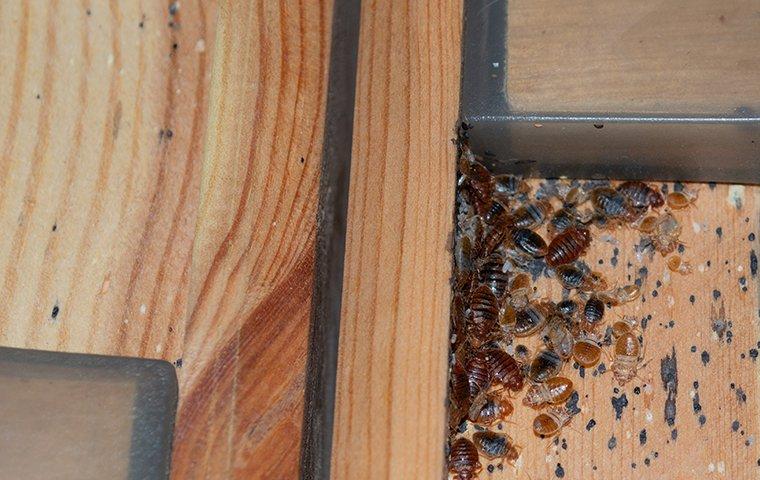Bed bugs will find their way into any home or business - clean or dirty. They are notorious travelers, and in spite of your best efforts, you may find yourself victim to a bed bug infestation. These tiny bloodsuckers have an oval-shaped body that flattens from top to bottom.
They are usually a reddish-brown color and they have elongated mouths that they use to penetrate the skin of their hosts, allowing them to feed on their blood. After they’re done feeding, their appearance changes a bit. Their bodies become swelled and their coloration becomes more of a deep purple-reddish shade.

Bed bugs often get mistaken for carpet beetles, and vice versa, but there are distinct differences in their larvae that allow you to tell them apart. Additionally, they have two distinct feeding habits. While bed bugs feed on human blood, carpet beetles feed on materials like fabric, carpets, rugs, and some stored foods.
These bloodsuckers may be tiny, but they’re not invisible as some people believe. The reason why we don’t see them very easily is that they are nocturnal. They hide away in dark, secluded areas during the day and only emerge at night to feast on human blood while their host sleeps soundly.
Bed bug bites are often the first sign of a bed bug problem. You will usually find a series of small, red bites in a linear formation. They will be itchy and uncomfortable, but they’re not really dangerous. For some, however, they may cause an allergic reaction creating large, uncomfortable itchy bites. Regardless, finding these bites is usually an indication of an infestation, and you should take action immediately.
Where Do Bed Bugs Live?
Despite what their name would have you believe, bed bugs aren’t only found in beds and sleeping areas. While they do tend to gravitate towards mattresses, box springs, bed frames, headboards, and bedding, they can also spread to other areas of the house where they hide during the day. They like upholstered furniture, clothing, wall voids, wooden molding, outlets, and even electronic devices.
If you're worried about an infestation, the first place you’ll want to look is in and around your bed. Check your sheets, pillowcases, and entire bed frame from top to bottom. From there, you’ll want to inspect your furniture, upholstery, clothing, couch seams, cushions, curtains, carpets, etc. Essentially, once bed bugs get inside your home, they are capable of traveling from room to room as they latch onto a person’s clothing and travel throughout your home.
What Are Some Signs Of Infestation?
Apart from seeing bed bugs themselves, you may notice signs that they leave behind indicating an infestation is well underway:
- You may find dark, red spots on your bedding or clothing. These are blood stains that are left after a bed bug finishes feeding on its host.
- You may see little, black spots on your bedding, linens, upholstery, etc. This is fecal matter and excrement that the bed bugs leave behind.
- You may find egg casings or traces of shed skin. Bed bugs leave these behind as they move through their life cycle from one stage to the next.
- You may detect a musty odor. Bed bugs emit an unpleasant smell through their scent glands.
How Do You Get Rid Of A Bed Bug Infestation?
Once bed bugs infest, they are extremely hard to get rid of. First of all, they’re hard to detect as they hide during the day and emerge while we’re sleeping. Secondly, they can easily spread from one room to the next by hopping onto someone or something that is moving into a different area of the house. This makes the infestation hard to contain. Thirdly, bed bugs can go long periods of time without feeding. So, while you may not see signs of them in your bed, they may be hiding out, nesting and breeding for a while before feeding.
A bed bug infestation is not something you can handle on your own. Contact the team at Pestmaster® Services at the first sign of bed bug activity. We perform a thorough inspection to identify all infested areas and then work with you to come up with the right bed bug treatment plan. Don't stress about bed bugs anymore; let us do the work for you. Reach out to one of our friendly experts today!
.png)
.png)